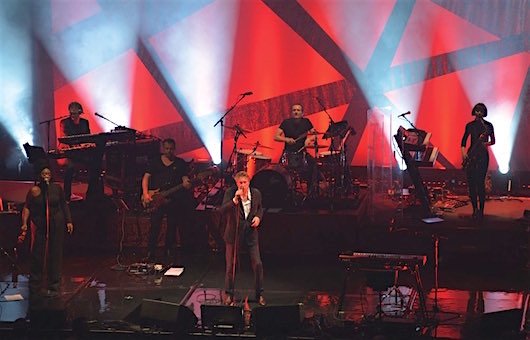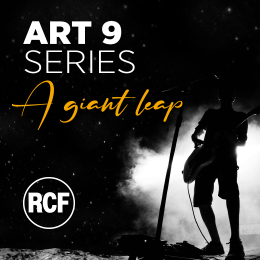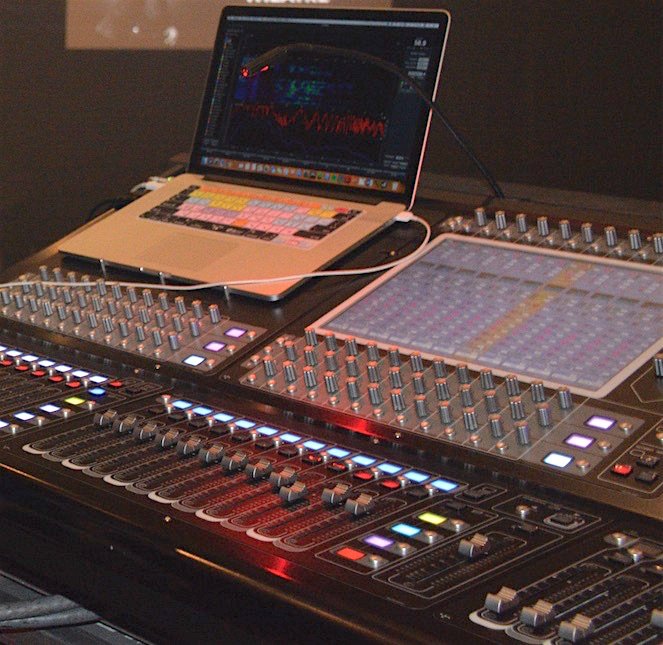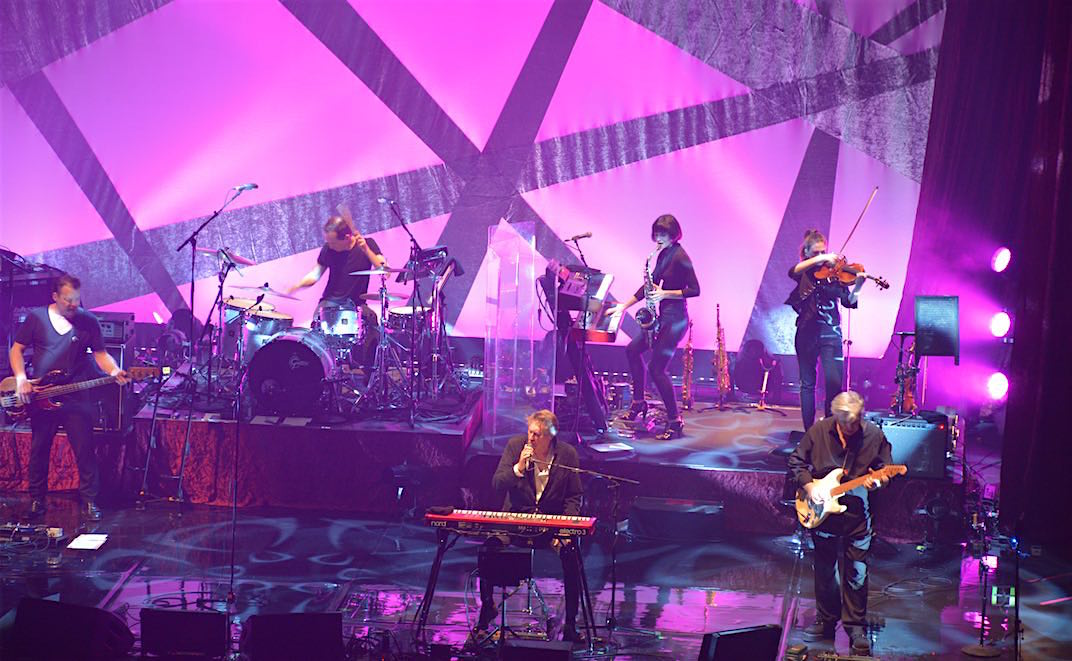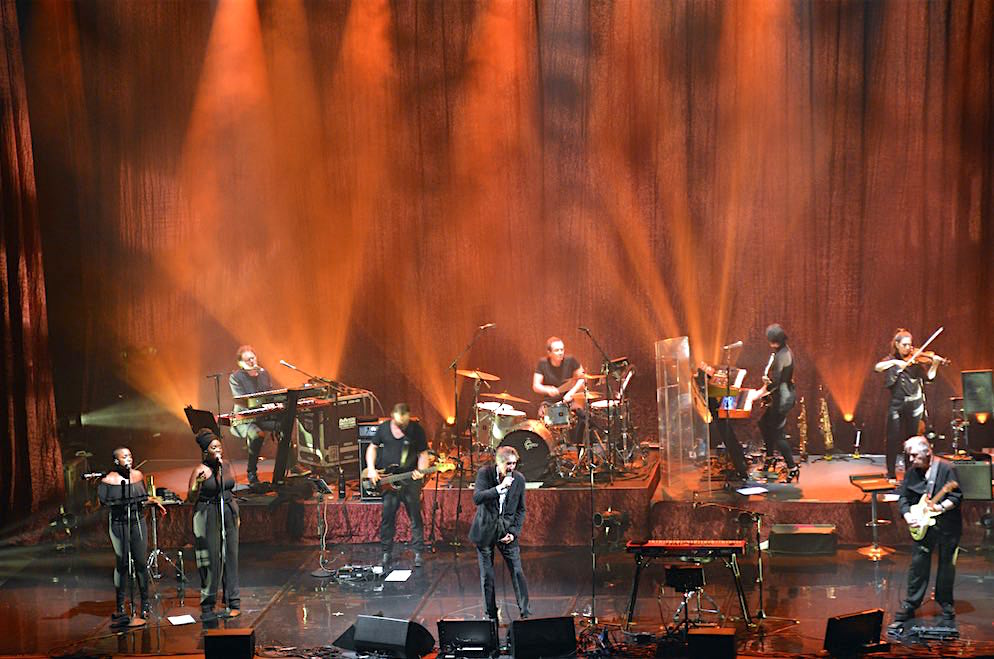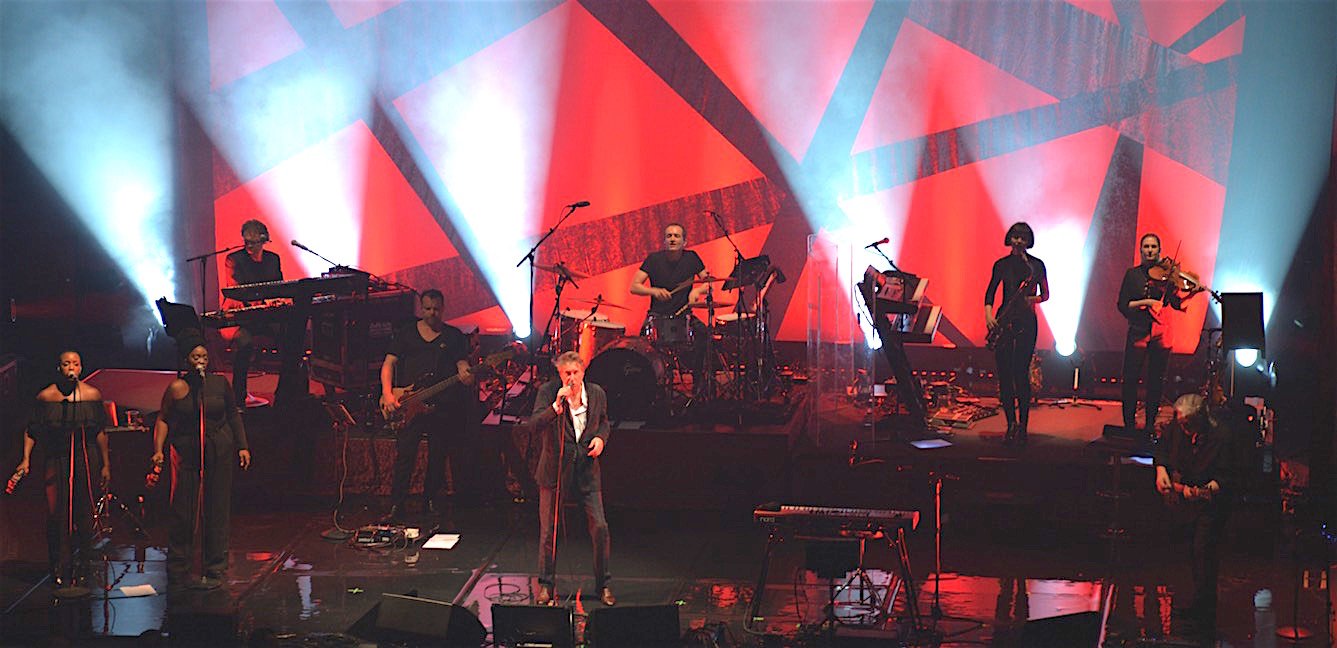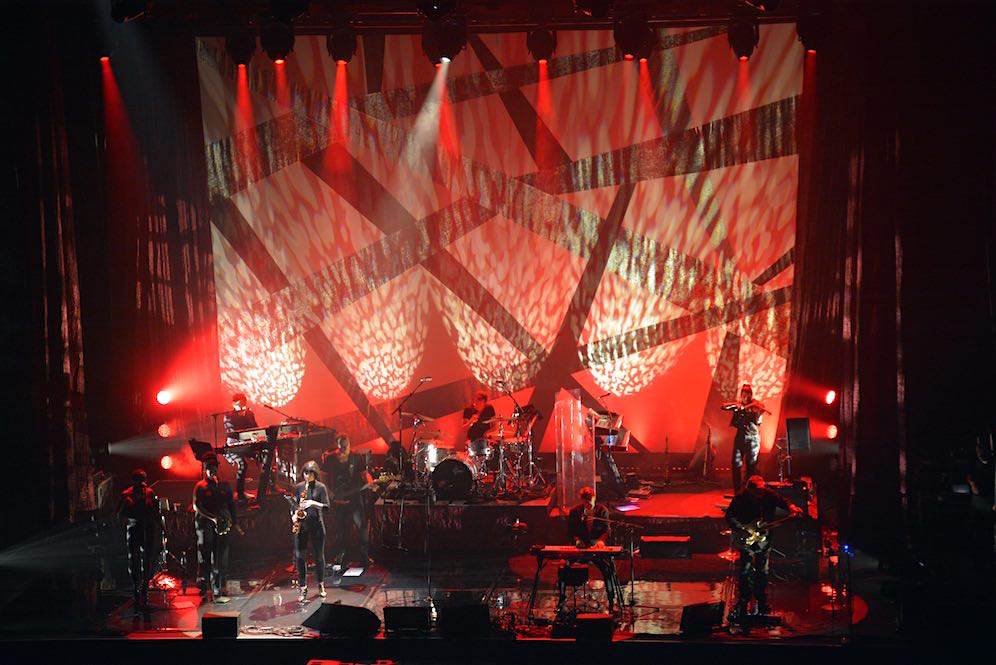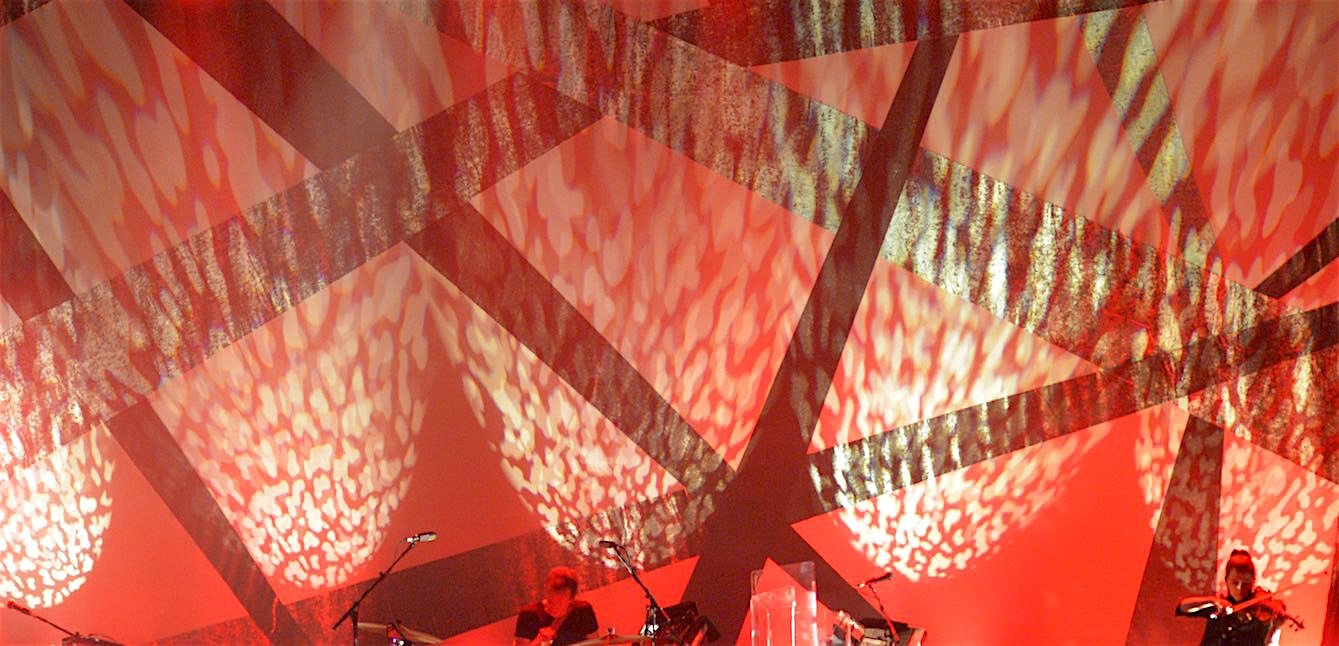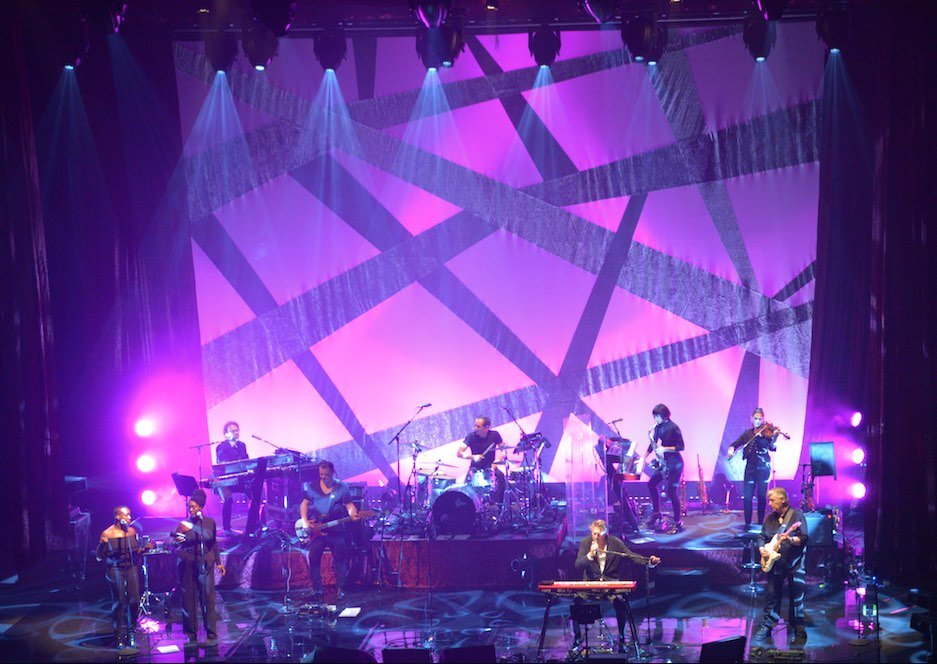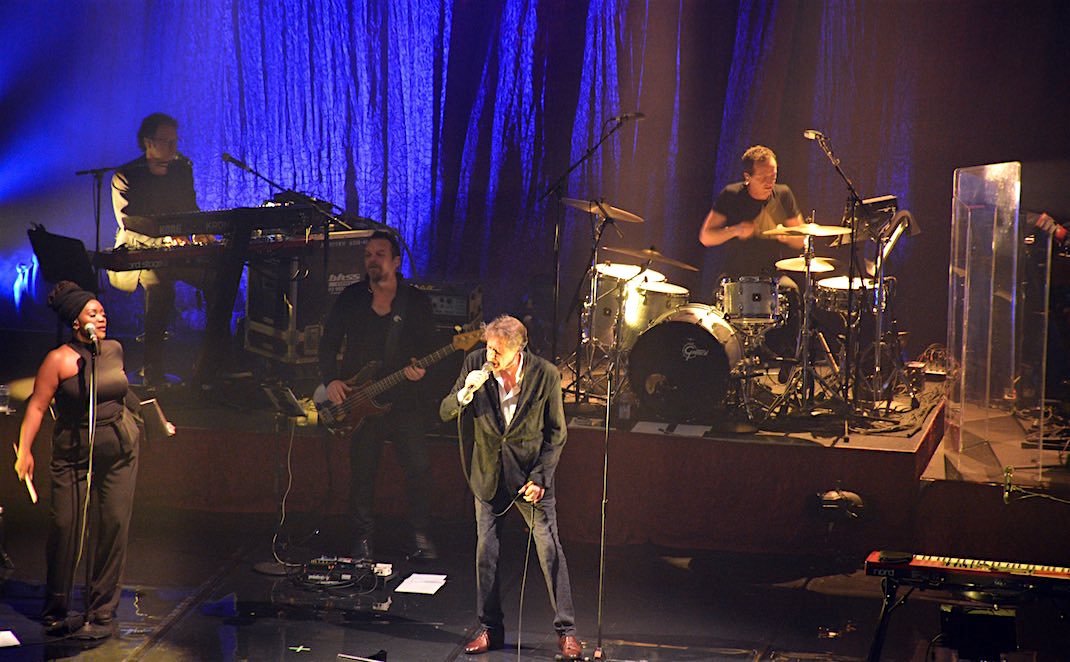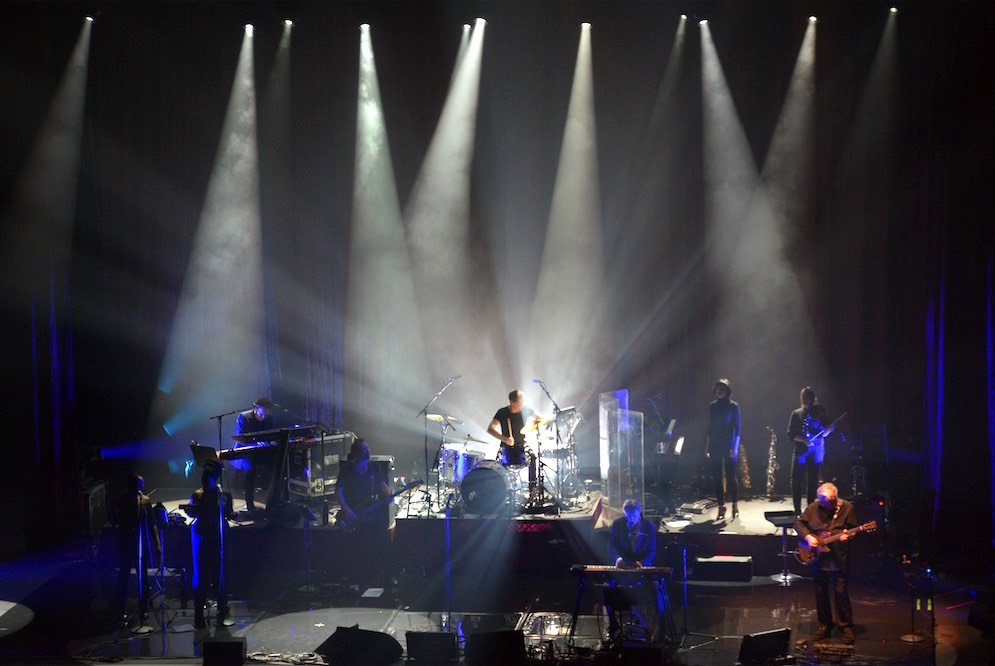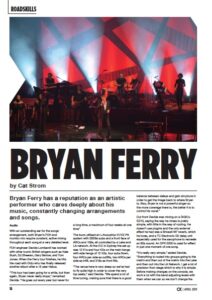Subscribe to CX E-News
ROADSKILLS
Bryan Ferry
story and photos by Cat Strom.
Bryan Ferry has a reputation as an artistic performer who cares deeply about his music, constantly changing arrangements and songs.
Audio
With an outstanding ear for the songs’ arrangement, both Bryan’s FOH and monitor mix require constant, active mixing throughout each song at a very detailed level. FOH engineer Davide Lombardi has worked with other iconic British singers such as Kate Bush, Ed Sheeran, Gary Barlow, and Tom Jones.
When the Ferry tour finishes, he hits the road with Dido who has finally released another album after a 15 year hiatus.
“This tour has been going for a while, but then again, Bryan never really stops,” remarked Davide. “He goes out every year but never for a long time, a maximum of four weeks at one time”
The tours utilised an L-Acoustics K1/K2 PA system with SB28s subs and a front face of ARCs and 108s, all controlled bya Lake and LA network. At the ICC in Sydney the set up was 12 K1s and four K2s on the main hangs with side hangs of 12 K2s, four subs flown, four ARCs per side as outfills, two ARCs per side as infill, and 218s as front fills.

Davide Lombardi – FOH mix
“The venue here is very steep so we’ve had to fly quite high in order to cover the very top seats,” said Davide. “We spend a lot of time tuning, making sure that there is a good balance between delays and gain structure in order to get the image back to where Bryan is. Also, Bryan is not a powerful singer so the more coverage there is, the better it is to control his vocal.”
Out front Davide was mixing on a DiGiCo SD10, saying the way he mixes is pretty simple, with little in the way of routing. He doesn’t use plugins and the only external effect he had was a Bricasti M7 reverb, which he loves, and a TC Electronic D2 delay unit especially used for the saxophone to recreate an 80s sound. An SPX 2000 is used for effect in just one moment of one song.
“It’s really very simple,” added Davide. “Everything is routed into groups going to the matrix and then out of the matrix into the Lake and then out into the LA Network.
“I get a lot of precision from stage which is why it is simple. Before making changes on the console, we work a lot with the band adjusting levels with them when we can so we don’t change the sound too much. I try to leave it as natural and organic as possible.”
Davide’s biggest challenge is getting Bryan’s vocal above everything else as he is a gentle singer and talker, and can sometimes mumble! As well as Bryan, there are eight people onstage and with his music being very busy, there is not much space left for his vocal to cut through. However Davide says that is something Bryan seeks as he wants to express himself with his music rather than his voice. The result is a lot going on for Davide with a ‘proper’ live mix.
“There are constant changes and we can’t rest for one second,” he said. “There are layers and layers happening all the time.”
Bryan uses an Audio Technica 6100 microphone, a dynamic mic that has condenser characteristics according to monitor engineer Tom Howat. “It’s an interesting mic, although you could potentially get a lot of spill in it, so a lot of what we do is containment,” Tom commented.
“It’s a good choice though because it’s not a condenser mic but you still get a quality output from it and Bryan really likes it.”
Modeling amps are used for the guitars so there are no guitar amps onstage to help keep spill under control. Sax mics are from SD Systems; again, they are dynamic, and have tripod prongs that clip onto the bell of the horn.
“They give you a very nice rich sax tone,” said Tom. “We have DPAs for the violin and the rest is pretty standard, although the Shure SM57 on the washboard is a highlight of the show.”
Tom mixed monitors on an Allen and Heath dLive, his console of choice but fessed up to having a history with it as he was part of the development team! “It’s a great sounding console, is very powerful, and is good for IEMs,” he added.

Tom Howat – Monitor Engineer
“We did some orchestra shows last year and I completely maxed it out, used the modularity of the system to expand with it which is all very cool.”
Everyone was on IEMs; Sennheiser 2050s, with Tom having has 16 transmitters and only the drums were hard-wired. “Mixing monitors for Bryan is a very parallel equation to Davide – precision, accuracy, coping with what he’s hearing and wanting to hear,” said Tom.
“And also like the FOH mix, you’re riding every solo and readjusting all the time. The band basically get my attention during the soundcheck and I’m pretty much pinned on Bryan through the show. It’s mix, mix, mix and without snapshots I’d be lost on this one.
“The musicians play different instruments so there’s a fair bit of rotation there. Arrangements are everything with Bryan and I have to mix monitors as if I’m mixing out front, you can’t leave it alone for a minute. With the vocal you’re riding that fader up and down, pulling it back every time he’s not singing – so the finger grips that fader all the time.”
Tom reveals that he has to watch Bryan closely taking cues from whatever he is looking at, maybe something has to go up or down depending upon the look on his face. Reading his body language is a key part of Tom’s job.
Davide discovered that the ICC room had specific places that sounded quite different and he was interested to see how it changed once the audience were in the house.
“The corridor by the FOH has a cancellation about the low end at 40 – 50 Hz so we’ve been measuring that with Smaart,” he said. “You can see when you move the microphone you see a big scoop coming on 50Hz. We’ve tried to fix it but you can’t, it’s a natural thing but hopefully it will be better when the audience are in.
“I always make sure that the mix is not exactly perfect at the FOH, walk around the venue a lot during soundcheck to make sure I find a good balance between everywhere. That takes a long time but it’s worth it.”
The music comes at them at such a complicated level it pays off to keep the technical elements as simple as possible whilst using the power of technology to simplify the process.
“Smaart, snapshots… all great examples of using technology to enable us to do what we need to do mix wise because that’s where it is all at for Bryan,” added Tom. “It may sound like it’s straightforward but it’s not. You bury the technology so the actual hands-on bit really counts. Its old school but using high tech.”
JPJ Audio supplied the gear and crew with Davide and Tom commenting on how well they work together as a team.
Lighting
The original lighting design, devised between Rob Sinclair and Bryan, was about creating a classy, classic theatre environment by using crushed red Satinac drapes to frame the stage. There were borders for each of the three main lighting trusses (front/ mid/ back) with a set of legs on the mid truss to create the false proscenium, even in a standard rock venue.
Upstage there is a traveller track with larger Satinac drapes on it that give great depth when lit up – and of course, somewhere to go once it opened about half way through the show.
“It does look the best when in a theatre environment where you can frame the stage nicely with house black legs and borders, but works well in all venues even in the arenas we have played over here,” commented Matt Arthur, ex-pat and lighting director on the tour.
A mirror ball was hung centre stage off its own truss and as the story goes, was really the only specific design request from Bryan! That flies in on a Kinesys motor (or two as was the case in Australia) and is a particular highlight for the later part of the set. During the song Jealous Guy it flies into its low position and lights up the entire room.
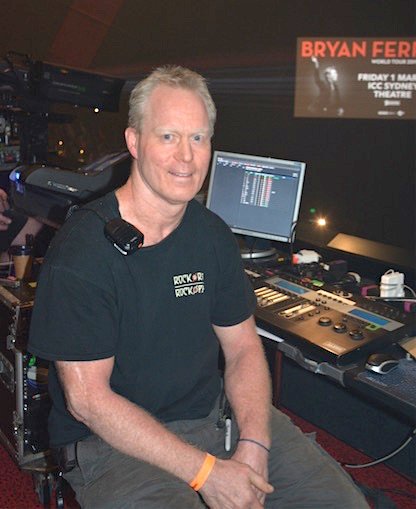
Matt Arthur – Lighting Director
“This was on a 2ch DMX rotator to allow me to have fast and slow movement in either direction,” said Matt. “The truss was trimmed high and the ball was hidden in a black drape so it was only visible once it was flown in. Again, another little trick to have somewhere to go to avoid the show getting too boring.”
The lighting, spilt over the three lighting trusses was pretty simple with 14 ETC Source 4 19º profiles for band key light on the front truss and six Martin MAC Vipers. The mid truss held five MAC Vipers and four Source 4 19º profiles for the band positions on the risers there. Finally, the upstage truss had six MAC Vipers on the downstage side and the traveller track on the upstage side.
Behind that was the drapes truss and between the mid and upstage was the mirror ball truss. “There has been some evolution since this shows inception in 2015, when I first programmed it on WYSIWYG in a small room with Rob in London, before hitting production rehearsals and changing most of it!” laughed Matt.
“We started with 40 songs in the desk, and now there are over 80 so I have put my stamp on it in that way. Over the past year I have designed and had manufactured some flown set panels that hang in front of the cyc which work well.
“The main reason to add them was to change the look of things when the curtains open and have something different upstage. As we were going back around to a lot of places and they have seen the show probably at least once before, it was important to present something new and not keep repeating the same old show. The panels are five asymmetric pieces that hang off the front chord of the drapes truss.”
With the addition of the set panels, Matt changed the front truss Vipers to Performances so that he could frame around the panels using the internal shutters, which was a nice touch. Moving forward, he is in the process of redesigning the show for the next legs that go into Europe in May/ June and then onto the USA in July through September.
For this Australian leg which had them come through South Africa, then out to New Zealand and onto Japan, it wasn’t possible to freight the set panels. “But that was a blessing in disguise I think as it forced me to come up with something to replace them,” added Matt.
“I ended up designing a backdrop that looked like an inflated panel. It’s silver velour ‘slashes’ appliquéd onto a gauze that is hung in front of the white cyc, revealed once the red curtains opened, in an eerie green and in full silhouette.”
Again, it was all asymmetric and large scale so it filled the upstage space nicely and with the positive and negative elements created a really cool picture upstage. Matt added 11 Chauvet Colband LED Strips underneath the drape to uplight it and highlight the texture of the sliver velour at times. This was a nice effect that gave them another look as opposed to just having it in silhouette all the time.
Matt reverted back to standard Vipers on the front truss as Phaseshift didn’t have Performances, but also as there wasn’t really specific areas to ‘cut’ around, it was better to have broader brush strokes with the standard Vipers … plus a larger gobo choice too.
“The only other thing we didn’t have here were the LED strips that would normally have sat top and bottom and around the front and sides of the risers to give it a ‘neon’ effect to detail the riser edge,” said Matt. “Each piece is 8ft and hence were not freightable in this situation.”
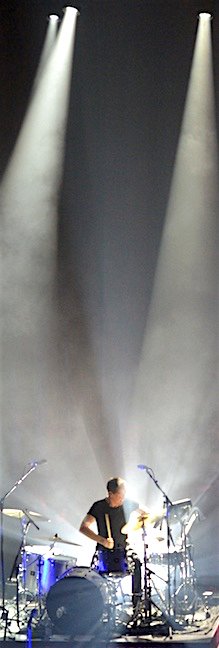 Along with the Vipers on the trusses, all the floor movers were Viper profiles as well. There were three per side down stage left and right for side light and then there was seven upstage in a line behind the risers.
Along with the Vipers on the trusses, all the floor movers were Viper profiles as well. There were three per side down stage left and right for side light and then there was seven upstage in a line behind the risers.
In addition to these there was a 1.5m pipe each side, just downstage of the red traveller that have three Martin Aura XB’s on them and between the ‘slash’ drape and the cyc there are nine more Auras.
On the floor behind each band member there was a Source 4 with no lens tube to give a wide blast of white light from the floor for punchy moments but to also isolate each member where needed.
“Choosing all spots was a design decision made early by Rob, but they are my favourite fixture and having all of them the same means consistent looks all around,” said Matt.
“Having six on the front truss means I can get some lovely projection looks onto the red drapes and the backdrops once the curtains open, but also some nice gobo looks on the band too.
“With the sides and upstage we can get the same, but also some nice big beam and gobo looks coming through the band. And of course the brightness to light up the mirror ball when that appears.”
The side Auras on the pipes primarily light the red drapes when they’re closed giving a lot of depth and colour back there. Later they also turn forward and shoot through the upstage band to give another look.
“Again, once the curtain opens, especially when we had the panels, they would light them up and create some nice silhouettes of the cutouts onto the cyc,” explained Matt.
“This run in Australia, with the new backdrop, they helped lift the front side of the backdrop out of the darkness, especially when I didn’t have the LED battens on the floor to do this job in South Africa and Japan.”
The Auras in between the two drapes primarily lit the cyc this time around to give the big silhouette of the backdrop which was a big feature on this run. Also when zoomed down and tilting up and down the cyc, they delivered another look to go to.
On previous tours when they had the panels, they would also be able to tilt forward and give the washy beam looks through the band that allowed the Vipers then to light the cyc with gobos, whilst not losing any backlight from the floor on the band.
Matt has been a longtime user of the Jands Vista and brought his own Vista on the tour. “I have been running this console for about 12 years now,” he said.
“It’s a great compact setup that consists of a Mac laptop, one S1 and two M1 control wings. It all fits in a Pelican case and I can make it 23kg if I take out the laptop… so no excuses not to fly it everywhere.
“Currently I’m running the V3.1 software which is pretty good. I love the ability to copy and paste anything to anywhere and a function called ‘Alias Cues’ is a god-send! Being laptop driven means that I can edit on a plane or in my hotel room and not have a big setup required.
I look forward to using V3.2 software soon. It’s a very powerful desk and I like the fact that I don’t have to punch in fixture numbers all the time.”
Matt says he is super proud of this show and he was proud to bring it back home to Australia and showcase it to his friends and family.
From CX Magazine – April 2019
CX Magazine is Australia and New Zealand’s only publication dedicated to entertainment technology news and issues – available in print and online. Read all editions for free or search our archive www.cxnetwork.com.au
© CX Media
Subscribe
Published monthly since 1991, our famous AV industry magazine is free for download or pay for print. Subscribers also receive CX News, our free weekly email with the latest industry news and jobs.


